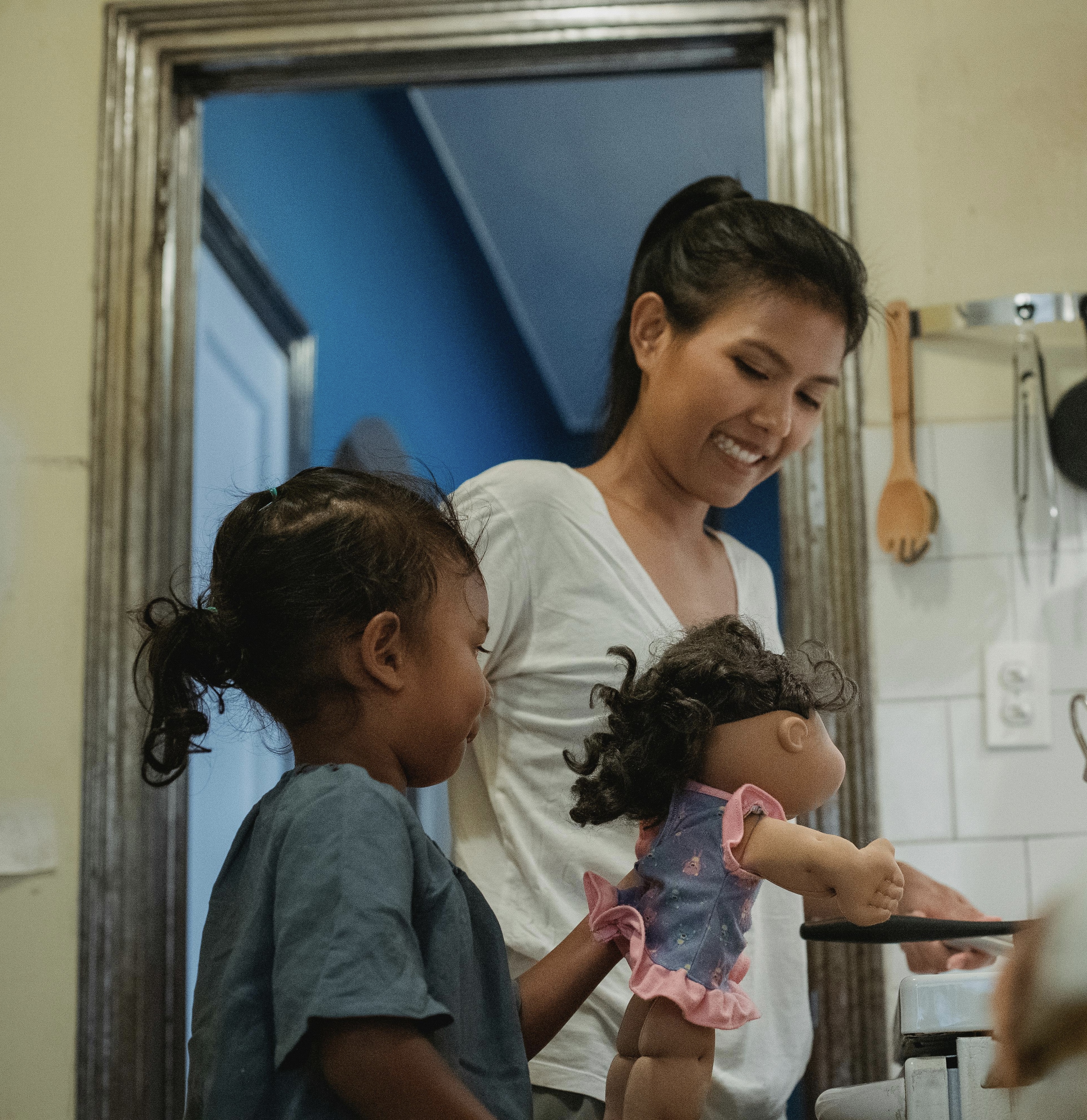
Dolls do not only reinforce certain gender roles and stereotypes, but also have an influence on the representation of skin color.
The most popular dolls present westernized standards as they have blue eyes and white skin. Hence, this point of view is ingrained in society ( Ashfaque, 2014). This phenomena has been looked into in several studies. In one of the studies, black preschool girls were presented with dolls of different skin colors and they were able to decide which dolls they wanted to play with.

Representation matters. Children playing with dolls of their own skin color (Pexels, 2024).
The findings showed that black children showed preferences in non-black/white dolls. The girl’s preferences were also shown in their behavior, language and (mis-)treatment towards the black dolls ( Sturdivant & Alanis, 2021).
In another study (Njoroge et al., 2009) young children from the age of 6 months to 36 months were put in a room with dolls of different skin color and were free to choose them. The results were interesting. Most of the children, even the ones who were not able to talk opted for who looked similar to them ( had the same skin color). Children who were verbal, would specifically mention this similarity and put emphasis on the fact that the doll looked like them or completely different to them. This shows how even little children are already aware of racial and cultural differences in dolls and therefore it is more than important to raise children in an open and unbiased way.